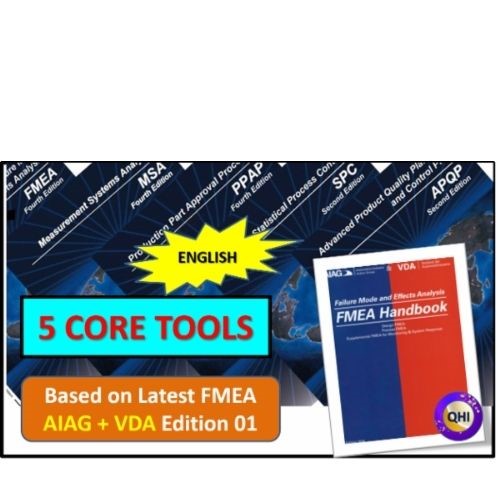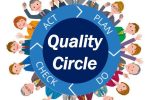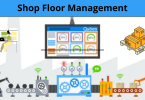Quality Core Tools Introduction
Organizations in the fiercely competitive fields of automotive and manufacturing must simultaneously address three crucial objectives:
1.Deliver items of a high calibre that meet or exceed client expectations.
2.Produce a volume that will last.
3.Give on schedule
The Quality Management System (QMS) standard IATF 16949 has developed to give these industries direction on how to succeed in all three. The Quality Core Tools support the unique IATF 16949 expectations. The value-added strategies and tactics that, when properly used, enable a company to accomplish all three objectives are the Quality Core Tools.
What are the Quality Core Tools?
Five supplementary techniques and/or processes that support IATF 16949’s expectations are referred to as the Quality Core Tools. Five guides that are available from the Automotive Industry Action Group independently document each of these tools (AIAG). In the following list, the conventional five core tools are listed in the following order:
- Advanced Product Quality Planning (APQP)
- Failure Mode and Effects Analysis (FMEA)
- Measurement Systems Analysis (MSA)
- Statistical Process Control (SPC)
- Product Part Approval Process (PPAP)
What is Advanced Product Quality Planning
Advanced Product Quality Planning (APQP) is a set of tools and processes that are used to communicate requirements, specifications, and hazards in order to ensure product quality. APQP is a systematic method of product and process design that makes it easier for suppliers, design communities, and customers to communicate. IATF 16949’s tireless commitment to continuous improvement is supported by APQP. The APQP consists of five sections or phases plus an input phase:
- Preparation or Input
The analysis of lessons learned and the creation of assumptions that are utilised to ensure success are supported by the pre-planning phase.
2.Design and Specify
Establishing the reliability, quality, and design goals links the Voice of the Customer (VOC) to concrete, attainable standards.
3.Design and Development of Products
The project timetable is inserted with dependability and quality tools at the product design phase to identify technical hazards. Failure is a substitute for technical risk. It is advantageous to take steps against identified risks in order to prevent product failure during both testing and use.
Section 2 uses a variety of methodologies, including the Design Failure Mode and Effects Analysis (DFMEA), to identify hazards and provide preventive measures.
As Section 3 Process Design and Development is being worked on concurrently, Special Characteristics are being refined and delivered to the production and assembly activities.
4. Designing and Developing Processes
Design for manufacturing and assembly can potentially go wrong. Risks that, if left unchecked, could lead to unhappy customers, delayed delivery, and manufacturing bottlenecks are revealed in Section 3.
One method used in Section 3 to pinpoint risky areas that need to be addressed before committing to the development of tools and equipment is the Process Failure Mode and Effects Analysis (PFMEA).
Utilizing either mistake proofing, statistical stability and capability, or error proofing, all special characteristics are assessed for prevention measures.
5.Validation of Products and Processes
Section 4’s goal is to provide proof that the planning exercises in Sections 1-3 were successful.
To ensure that the evaluation and measurement system can identify product integrity, measurement systems analysis (MSA) is used.
Statistical Process Control and dimensional layout are utilised to assess quality during a first production trial run (SPC). The Control Plan validates and documents Special Controls and Control Methods.
At the conclusion of Section 4, the Production Part Approval Process (PPAP) documentation may be submitted for approval.
6. Evaluation, Criticism, and Corrective Action
The good or service is currently being produced in its entirety. Each phase’s lessons learned are recorded and stored in a searchable database for later use.
Experiences deemed useful are shared throughout the company and used to create additional levels of Standard Work.
Internal and external performance monitoring for delivery, quality, and continuous improvement (e.g., reducing Risk Priority Number (RPN)) adheres to the IATF 16949 guidelines.
When failure occurs, the Eight Disciplines of Problem Solving (8D) and Root Reason Analysis (RCA) are used to identify the root cause and make a lasting correction.
What is Failure Mode and Effects Analysis (FMEA)
Failure Mode and Effects Analysis (FMEA) is a structured method that links prospective failure causes with failure modes and their effects to identify potential failure modes. Each combination has a level of technical risk attached to it. Actions to reduce the risk are identified when it is thought to be too high for the product or procedure under study. FMEA also examines the methods for testing and evaluating products to ascertain their quality or dependability (Design FMEA) (Process FMEA).
By assessing risk and taking preventative measures, failures can be avoided before they happen. The development of FMEA takes into account a number of issues, including:
Severity: Determines how much risk or unhappiness there is for the failure and its impact.
Occurrence:Probability evaluation of specific factors that have been associated with the failure mode
Detection: Ranking of a process control’s efficacy at either preventing or detecting a defective situation that does not conform to design intent (DFMEA) or catching a design flaw prior to the design’s release (PFMEA)
Risk Priority Number (RPN):The sum of the three ranks for every given probable failure/cause mechanism is the risk priority number (RPN).
You shouldn’t utilise an RPN threshold to decide when to act.
The goal of RPN is to assign an action and rerank once the status of that action is known.
The team in charge of developing the FMEA exhibits poor behaviour as a result of applying arbitrary RPN thresholds.
Criticality: The triad of severity and frequency that may point to an unacceptably high danger
Other team members are able to assess the design or manufacturing/process engineer’s work thanks to the implementation of FMEA. When adjustments can still be made without having a significant influence on the cost or timeline of the programme, Subject Matter Experts (SME) use their experience to assess the likelihood of failure.
What is Measurement Systems Analysis (MSA)
Measurement Systems Analysis (MSA) is an experimental procedure that establishes whether a measurement or assessment method is appropriate for usage with a certain part characteristic. The most crucial element of quality assurance and control is the requirement to make high-quality decisions. An unsuitable product could be accepted if the measurement system used has too much fluctuation or is unstable, which could lead to customer discontent or worse. On the other hand, a product that is acceptable might be rejected, increasing the pressure on the organisation to respond to a situation that doesn’t call for it. The measurement system will inevitably contain error. Unfortunately, a lot of people believe that the measurement is absolute when it is not. The measurement method may frequently be wholly unsuitable and call for replacement or significant modification.
MSA examines five different parameters:
- Bias: Bias is the degree of divergence of a measurement acquired from the system between a standard traceable to a standards organisation (e.g., National Institute for Standards and Technology (NIST) or similar), and is most commonly connected with calibration.
- Linearity : Refers to the variance of the anticipated measurement bias over the range of the gauge or instrument.Over the course of its practical measurement range, the device’s accuracy or bias does not remain constant.
- Stability: The capacity of a gauge to continuously deliver the same measurement on the same product. If the gauge shows a drift from readings taken previously of the same portion, it is not stable.
- Repeatability:If the same operator and gauge can produce the same result repeatedly while being tested in identical circumstances, the measurement system is considered to be repeatable.If the operator takes the same component, measures it, and gets a different result from previous measurements, there is a problem with repeatability (in identical conditions)
- Reproducibility: If many operators can obtain the same or comparable readings on the same parts, the system is said to be repeatable.
Guidelines for acceptance are based on two principles:
1.Percent Error to Tolerance (PETT) is the sum of the variances of the combined repeatability and reproducibility divided by the entire tolerance. A gauge system is originally validated using this examination.
2.Percent Error to Variance: The entire variation of the product/process divided by the total variation of the blended repeatability and reproducibility. In conjunction with high capacity results (Cpk=1.33 or higher), this assessment is used to decide if SPC may be minimised or completely abolished.
The following criteria must be met for acceptance:
1.Preferable error of 10% or less
2.Depending on factors like measurement costs, the impact of a failure’s severity, or the cost to repair the gauge, an inaccuracy of 10% to 30% may be acceptable.
3.Greater than 30% indicates that the gauge system needs to be improved or replaced.
What is Statistical Process Control (SPC)
Statistical Process Control (SPC), created by Walter Shewhart at Bell Telephone, is a group of statistical methods designed to comprehend a system’s behaviour. SPC makes use of the central tendency (Mean, Median, and Mode) and variation statistical principles (Spread or Standard Deviation). The operation of a process will show if it is under control or working in a stable and predictable manner.
The Normal Distribution
SPC typically uses the normal distribution as its foundation. The Normal Distribution shows a bell-shaped area beneath the curve with specified percentages. The description of the characteristic being assessed directly corresponds to where the curve (the central tendency) is located. Three standard deviations (also known as sigma) are added on either side of the central tendency to get the spread of the curve. The process under examination can use the proportion of product fitting under the curve. For instance:
- ± 1 sigma from the central tendency has 68.26%
- ± 2 sigma from the central tendency has 95.5%
- ± 3 sigma from the central tendency has 99.73%
The output of a process that is operating normally will conform to this % model. SPC makes use of the control chart to display the output “in real time,” reducing the amount of time needed to respond when something deviates from a previously validated process.
Control Charts
Control charts are frequently used to highlight trends that may differ from the bell curve percentages predicted. When a pattern is noticed, the process is out of control, and investigations are frequently taken. Control charts can be categorised as either variable or attribute. Data that can be interpreted when plotted on a chart is used in variable control charts. A Go/No Go data set’s performance is displayed on attribute control charts.
One chart for the central tendency and one for the spread are often included in a variable control chart pair. For the purpose of measuring the central tendency and control limits for each chart, lines that are equally spaced on either side of the central tendency have been drawn. Depending on the sample size of the group or subgroup, the control limit lines correspond to the expected dispersion at 3 standard errors.
The two points—one for central tendency and the other for spread—are plotted after samples are selected at predetermined frequency. Up to six earlier points are examined in addition to the plotted points. The following factors are used to assess the process’ stability:
1.Location beyond the control limit line
2.7 consecutive points on either side of the main trend lines.
3.The number 6 or 7 indicates the same thing.
4.7 consecutive points that closely follow the central tendency
The chart can predict what is most likely to happen next when this condition is used. Out of control is simply different from previous experiences and has nothing to do with a poor product. On closer inspection, a chart may show an out of control scenario, but the analyst may choose to keep it that way and create a new best case.
Charts with attribute controls only show undesirable conditions. In order to change the unwanted situation, actions are taken. Because they can be effective visual tools for demonstrating progress, attribute control charts are frequently associated with continuous improvement.
The chart can predict what is most likely to happen next when this condition is used. Out of control is simply different from previous experiences and has nothing to do with a poor product. On closer inspection, a chart may show an out of control scenario, but the analyst may choose to keep it that way and create a new best case.
Charts with attribute controls only show undesirable conditions. In order to change the unwanted situation, actions are taken. Because they can be effective visual tools for demonstrating progress, attribute control charts are frequently associated with continuous improvement.
What is Production Part Approval Process (PPAP)
The automotive and aerospace sectors use the Production Part Approval Process (PPAP), which is a standardised procedure. Through documentation, PPAP proves that the process and product meet the requirements of the design intent and the purchase order as manufactured. Because they are developed at crucial points during the design of products and processes, PPAP elements are similar to APQP in this regard. Evidence of conformity is gathered and made available to support sound planning. Manufacturers and suppliers benefit from a better understanding of the requirements thanks to PPAP. PPAP also assists in making sure that the techniques chosen to make the parts can reliably duplicate them at the intended production quantities. The PPAP manual published by the Automobile Industry Action Group now governs the PPAP procedure for providers to the automotive industry (AIAG).
According to risk, PPAP is implemented at five levels. The lowest risk levels, 1 and 2, are set aside for straightforward designs and reputable suppliers and manufacturers. Level 3 is the default, and it calls for the provision of all necessary components. Level 4 is the customised option, which is used when particular alterations necessitate more investigation. The highest risk suppliers and parts are under Level 5. Additional supplier-customer cooperation is needed when level 5 is specified. Customers frequently visit Level 5 during the creation of crucial core tools and perhaps even during the first production trial run. The PPAP submission is comparable to example submissions used in many industries; however, the PPAP paperwork also needs to demonstrate the application of preventative techniques.
To finish the PPAP documentation, a Cross Functional Team (CFT) is required because the following components need input from:
1.Purchases from Suppliers and Subcontracts
2.Engineering Design
3.Engineering for Processes and Manufacturing
4.Quality Control and Assurance
5.Production Operations
6.Laboratory Experiments
Why Use Quality Core Tools
The New Product Introduction (NPI) phases of product and process development as well as specific situations such experienced failures or technical changes involve the usage of the Quality Core Tools. The inputs and outputs of the core tools are synchronised and connected by Quality-Quality One’s Core Tools approach. Linked tools boost their usefulness to one another and decrease total workload, in contrast to those who perceive the tools as separate.
1.Any project’s primary objectives are:
2.Deliver items of a high calibre that meet or exceed client expectations.
3.Produce a volume that will last.
4.Give on schedule
Through risk-related prevention activities, APQP and FMEA ensure quality. APQP also promotes on-time delivery through better planning and communication. Superior gauge systems validated using MSA are used to capture evidence of attained quality, and data is collected and evaluated using SPC. An analyst would note the following after reviewing the Quality Core Tools from inputs to outputs:
1.For all activities and tools, including the remaining Quality Core Tools, involved in product and process prevention and control, including reliability/design goals, preliminary special features, timing, and guidance, APQP offers requirements, specifications, timing, and direction.
2.Fine-tuned specific characteristics, testing inputs, and design enhancements are provided by the design FMEA risk assessment.
3.Process FMEA Risk Assessment takes into account potential process flaws, enhanced process performance, and management techniques for unique characteristics.
4.MSA certifies the gauge systems used for unique characteristic measurements, which are essential for correctly identifying product quality defects.
5.SPC illustrates process capability and stability for unique characteristics derived by DFMEA and PFMEA in the first place.
6.The PPAP shows that all special features have developed special controls or reached a degree of stability and capability (Cpk) that is acceptable.
The Special Characteristics are the characteristic that binds all Quality Core Tools together. Each tool is given a certain characteristic, which it either improves, treats, or gets rid of altogether. The number of hazards identified and eliminated before PPAP is used to gauge progress.
How to Apply Quality Core Tools
Quality Core Tools are used in a coordinated and sequenced manner. The term Collaborative Product Process Design (CPPD) describes cross-functional collaboration between engineering communities as well as scheduling overlap of activities.
The Product Quality Plan’s other tools are connected to the output of each Quality Core Tool. As soon as possible throughout the development of a product or process, Quality Core Tools should be implemented. A lack of efficiency and little to no impact on quality result from waiting until the last minute. There is nothing redeeming about creating the papers just to “tick the box” for an organisation.
The DFMEA and PFMEA correlations can be used to illustrate the value-added linkage:
1.The design team will specify precise dimensions, material characteristics, and tolerances, along with their severity and customer impact. This is what a special characteristic refers to. The DFMEA severity determines the sort of characteristic (Critical, Significant, High Impact, etc.)
2.The Manufacturing / Process Engineer is informed of Special Characteristics well before a finished design or drawing is made available.
3.Timing is crucial for this transfer; the partnership must happen as soon as possible.
4.Once received by the Manufacturing / Process engineer, the Special Characteristic is linked to a process technology from the process flow chart
5. Then, special characteristics are converted into failure modes for the relevant process step in the PFMEA (s).
6. Risk assessment for process failure leading to improper production of the Special Characteristic.
7.In order to discuss Design for Manufacturability or Design for Assembly (DFM/DFA), the manufacturing / process team will work with the design team.
8.Special controls are incorporated into the creation of the control plan to either error- or mistake-proof it or to detect failure or cause
Check out the websites below for a more thorough application of the Quality Core Tools:
- Advanced Product Quality Planning (APQP)
- Failure Mode and Effects Analysis (FMEA)
- Measurement Systems Analysis (MSA)
- Statistical Process Control (SPC)
- Production Part Approval Process (PPAP)
Learn More About Quality Core Tools
Through consulting, training, and project support, Quality HUB India provides Quality and Reliability Support for Product and Process Development. According to your specific needs, wishes, and preferences, Quality HUB India offers Knowledge, Guidance, and Direction in Quality and Reliability activities. Let us assist you in recognising the value of quality core tools project support, quality core tools training, or consulting.
Other Relevant Courses:








